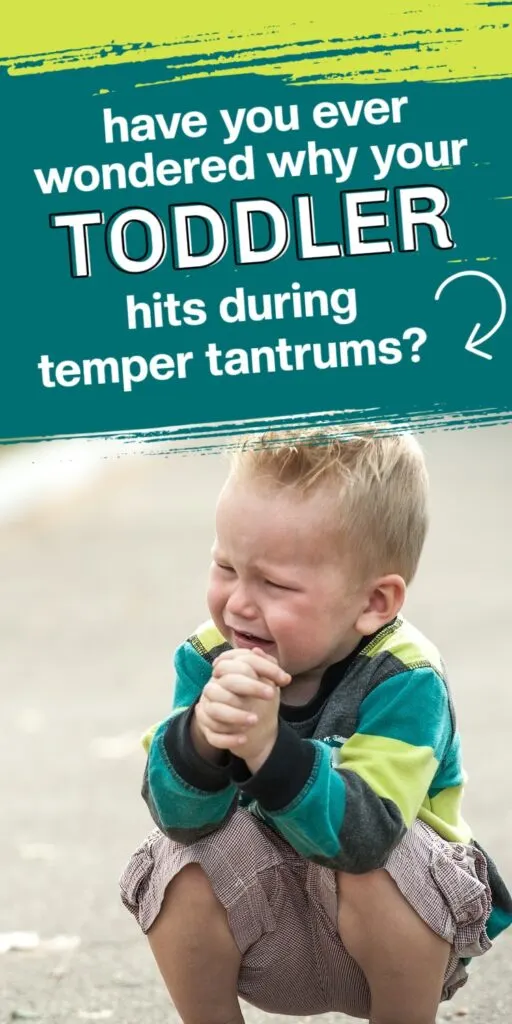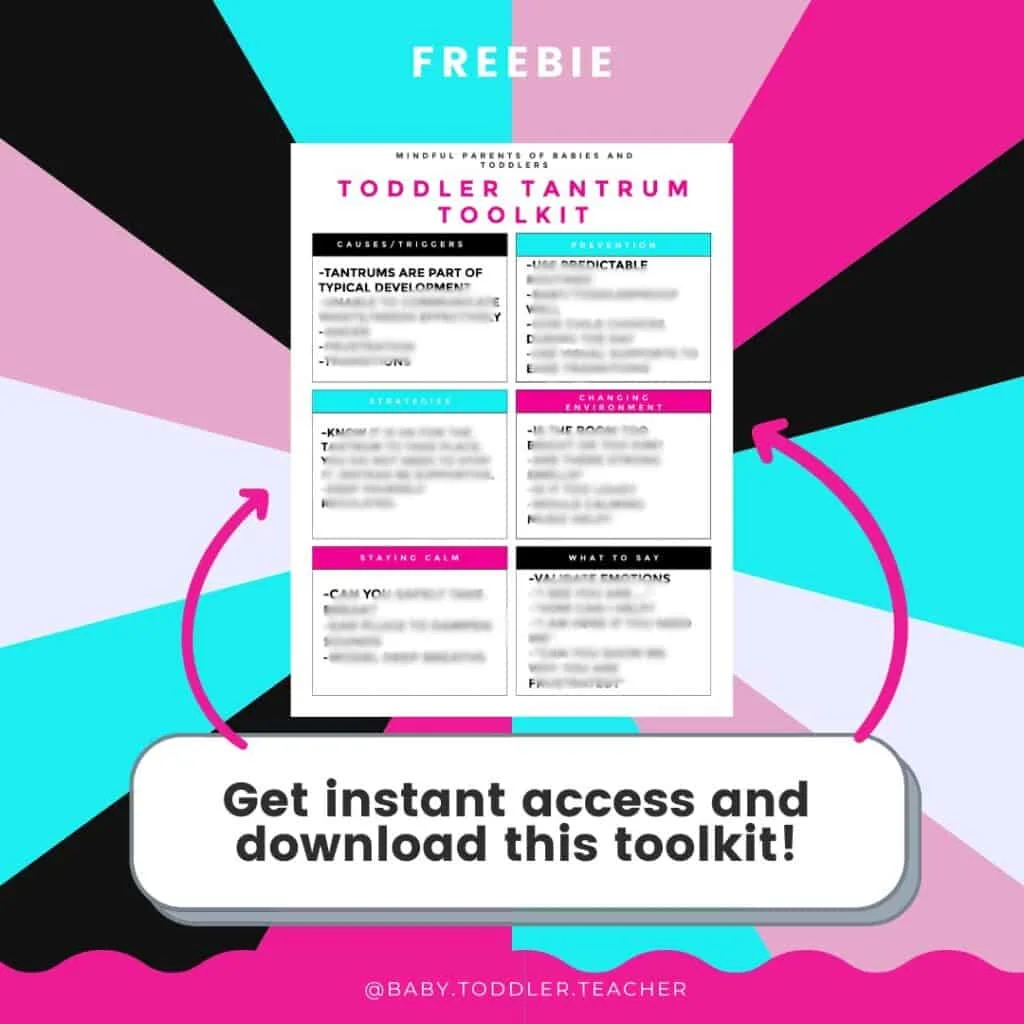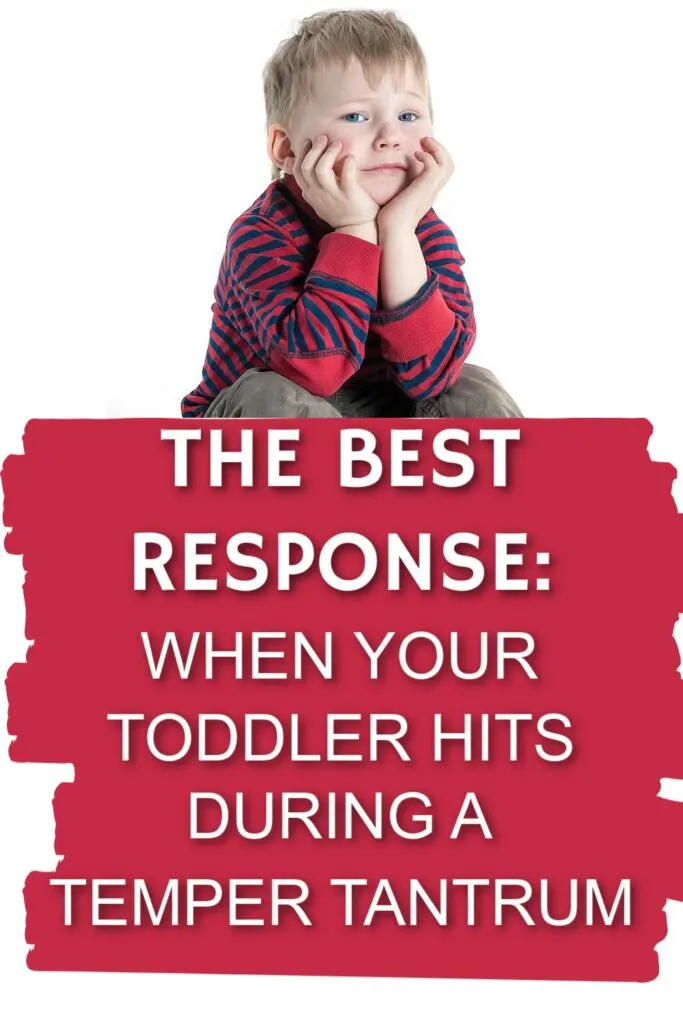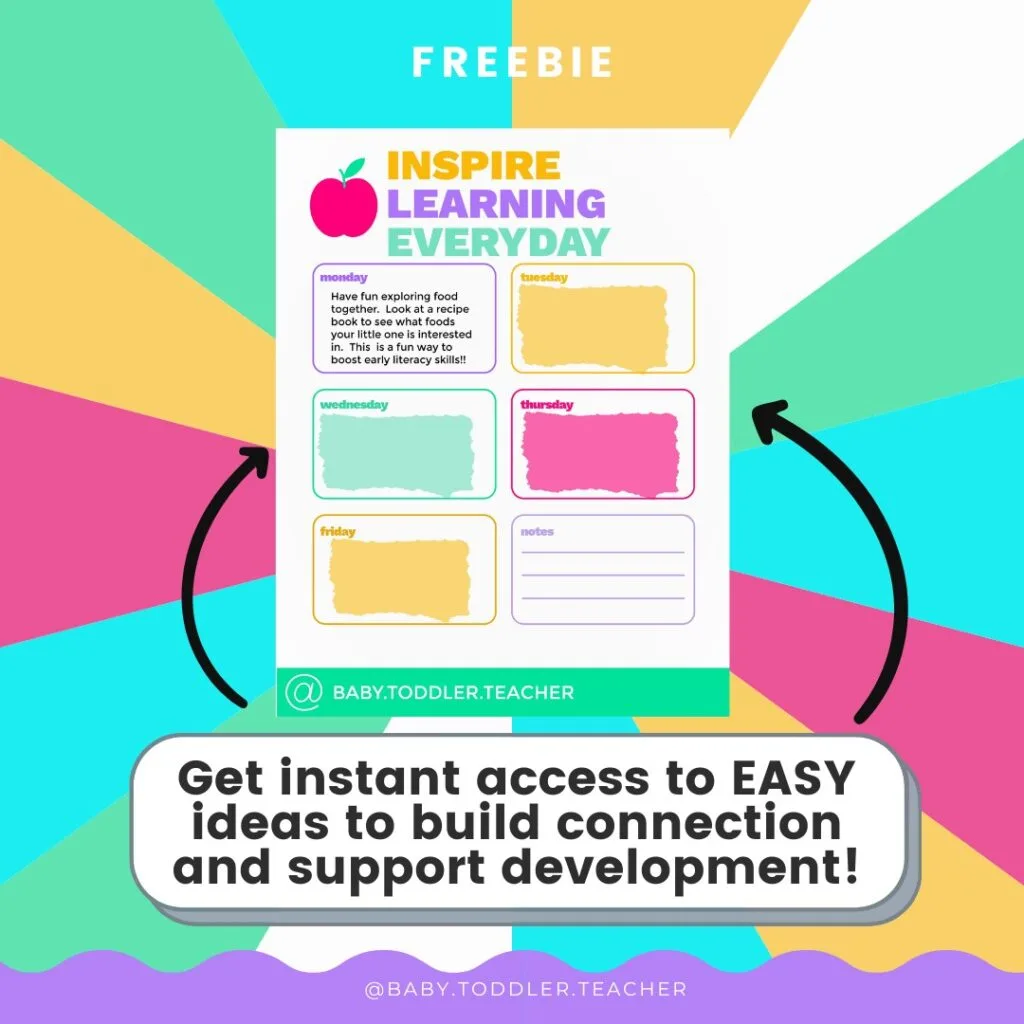Aggressive Behavior During Toddler Tantrums
Navigating the world of young children can be an emotional rollercoaster, especially when confronted with toddler temper tantrums featuring aggressive behavior like hitting or throwing.
However, it’s important to remember that these tantrums are a normal part of your toddler’s development.
They are in the process of having intense emotions they are learning to control.
While challenging at the moment, handling these situations correctly can foster emotional intelligence in the long run.
So, what’s the best way to respond when your toddler’s tantrum turns aggressive?
Understanding your child’s emotions and behaviors is the first step.
This blog post will explore effective strategies to manage and respond to these situations.
You can best stay calm, show empathy, and gently guide your child towards healthier expressions of their emotions.

(This post may contain affiliate links. To read our full disclosure policy click here.)
Understanding the Root Cause of Toddler Tantrums
Toddler tantrums are a normal part of child development, frequently stemming from their still-developing brains and lack of impulse control.
Often, these outbursts are an expression of strong emotions that your child is struggling to manage.
Just like adults, toddlers experience a range of feelings, but their language skills are not always advanced enough to effectively communicate these complex emotions.
Common triggers for these tantrums can include basic needs not being met, such as being hungry, tired, or overstimulated.
For instance, nap time being delayed or a trip to the grocery store during a typically restful time could easily trigger a tantrum.
New situations and environments can also be overwhelming, leading to frustration and tantrums.
It’s crucial to understand that these tantrums are not indicative of bad behavior, but rather a sign of your child grappling with their physical needs and emotions.
Their emotional brain is in the driver’s seat during these moments, while their logical brain is still learning to take control.
Recognizing this as a normal part of their development can help you deal with these tantrums more effectively and compassionately.
Identifying Tantrum Triggers for Prevention

Preventing toddler tantrums can often be achieved by understanding what triggers them and developing strategies to address these triggers.
Transition periods often act as significant triggers for toddlers.
Abrupt changes in activity or environment can be overwhelming for a child whose sense of time and routine is still developing.
For instance, moving from playtime to bedtime can be frustrating for a toddler engrossed in a fun activity.
Similarly, transitioning from a calm home environment to a bustling grocery store can be overstimulating.
To prevent tantrums triggered by transitions, it’s important to have a plan in place.
Here’s where routine and predictability come into play.
Consistent daily routines can provide a sense of security and predictability for your toddler.
Introducing a “heads-up” system can also be beneficial – giving your toddler a 5 or 10-minute warning before a transition happens can help them adjust and prepare for the change.
Using visual supports can also be helpful for toddlers as well.
Furthermore, understanding your child’s specific triggers can help you anticipate potential tantrum situations.
For instance, if your child tends to have tantrums when they’re hungry, carrying a snack with you can prevent a meltdown.
If overstimulation triggers tantrums, planning your day to avoid overly busy places or times can help.
By recognizing what triggers your toddler and having a plan to address it, you can prevent some tantrums before they even start.
Preventing Tantrums Through Connection and Choice
Your connection with your child is a powerful tool in preventing tantrums.
Throughout the day, make a conscious effort to connect with your toddler, giving them your undivided attention at regular intervals.
This can give them a sense of being heard and understood, reducing feelings of frustration that can lead to tantrums. It can be as simple as a few minutes of play, a cuddle, or a chat about their day.
Encouraging your toddler’s autonomy can also help prevent tantrums.
Toddlers are at a stage where they are beginning to assert their independence and giving them choices in their daily activities can make them feel more in control.
It can be as simple as letting them choose between two outfits for the day, or deciding which snack to have.
By offering choices, you allow them to have a say in their day, satisfying their desire for autonomy while still maintaining necessary boundaries.
Remember, it’s important to only offer choices you’re comfortable with and to keep them simple.
Too many choices can be overwhelming for a toddler.
By connecting with your child throughout the day and giving them choices, you can help foster a sense of security and control, reducing the likelihood of tantrums.

The Best Response When Your Child Hits During a Tantrum
When your child resorts to hitting during a tantrum, the ideal response is calm and regulated.
In the heat of the moment, with your child’s temper tantrum escalating and toddler aggression being displayed, your instinct might be to react with equal intensity.
However, it’s essential to remember that as an adult, you must set a good example.
Your composure during these intense outbursts can do a lot to teach your child about self-regulation.
Take a deep breath and maintain body language that communicates calmness and control.
This not only helps you stay composed but also provides a reassuring presence for your child.
It’s vital to set clear limits – make it understood that hitting is not okay.
A simple and straightforward phrase such as, “We do not hit, hitting hurts,” can help reinforce this message.
After your child has calmed down, that’s when you should address their big feelings and the reasons toddlers might resort to aggression.
Use this as an opportunity to teach them about their emotions and how to handle them appropriately.
Make sure they know it’s okay to feel frustrated or angry, but hitting is not an acceptable way to express these feelings.
Guide them towards healthier outlets, such as using words to express their feelings, or finding a safe place where they can calm down.
This process is not about suppressing emotions, but rather teaching your child to identify, express, and manage their feelings in a healthy and constructive manner.
By staying calm and setting clear boundaries, you can help your child navigate their emotions and respond more appropriately in the future.
Why Time Out Is Not the Best Approach for Handling Hitting During Tantrums
Often, parents resort to implementing a ‘time out’ when toddlers exhibit aggressive behaviors such as hitting during tantrums.
However, it’s essential to understand that this method may not be as effective as it seems.
Instead of facilitating emotional regulation, time-outs tend to isolate the child, potentially instilling feelings of shame or confusion.
They are left alone with their big emotions without the tools or understanding needed to manage them.
Instead of using time-outs, try to focus on teaching and guiding.
This approach involves identifying emotions, validating feelings, setting clear boundaries, and guiding your child toward healthier expressions of emotions.
It’s about helping them understand why hitting is wrong and providing them with tools to handle their emotions better in the future.
Teach Emotional Regulations Skills When Your Toddler is Calm
Teaching emotional regulation skills to your toddler is most effective when done during their calm moments.
This allows for better understanding and setting the stage for the future.
Modeling these skills yourself and using co-regulation is one of the best ways to teach your child.
By managing your own emotions appropriately, you demonstrate to your child the better ways to react when they feel overwhelmed.
Reading books about emotions can also be a valuable tool.
These books often depict characters dealing with similar emotions as your toddler, providing relatable scenarios that can help your child understand their feelings better.
Discussing emotions you observe in others, like a child crying in the grocery store, can facilitate real-time learning for your toddler.
Showing them pictures like this and letting them point to how they are feeling can also be an excellent strategy for them to start to learn emotional vocabulary.
Use such instances to explain why the child might be upset and discuss different ways the child could find comfort and support.
Puppet play during calm periods can be a creative and engaging way to explore emotional regulation with small children.
Puppets can act out different situations, creating a safe space for your child to explore their feelings and reactions.
Children’s television has evolved to become a powerful tool in shaping young minds, with some shows specifically designed to help children navigate their strong feelings One such show is “Daniel Tiger’s Neighborhood”.
This animated series, inspired by the timeless classic, “Mister Rogers’ Neighborhood”, targets preschool-aged children and addresses various socio-emotional themes.
Episodes often feature Daniel and his friends encountering situations common in a toddler’s world, such as dealing with anger, frustration, or disappointment.
The narrative offers simple, memorable songs that provide strategies to manage these emotions, fostering emotional intelligence in young viewers.
The show emphasizes that “it’s okay to feel angry, but it’s not okay to hurt someone” – a principle crucial for children to understand and internalize.
Such educational shows can serve as an excellent supplement to the emotional regulation lessons you teach at home, reinforcing them in an entertaining and engaging manner.
Remember, the most important thing is to have these conversations regularly.
Exploring emotional regulation should become a routine part of your interactions with your toddler, rather than only being brought up in response to a child’s tantrum.
This proactive approach is a good idea as it allows your child to gradually internalize these lessons, leading to improved emotional regulation in the future.

Concerned about your toddler’s tantrums?
In instances where you feel overwhelmed or concerned about your toddler having severe tantrums, it’s crucial to remember that there are resources available to assist you.
A key first step is discussing your observations and worries with your pediatrician.
They can provide insights, guidance, and potentially, referral to a specialist or child psychologist if deemed necessary.
Furthermore, every state in the U.S. has an early intervention program designed to evaluate and assist children who may have developmental delays or disabilities.
These programs can provide comprehensive assessments and a range of services tailored to your toddler’s specific needs.
Never hesitate to reach out to these professionals, as they are there to support both you and your child through this journey.
Tantrums are Tough…Hang in there!
Managing a toddler’s tantrums and aggressive behaviors like hitting, involves much more than just setting boundaries or resorting to time-outs.
It’s about teaching them self-regulation skills and how to appropriately express their big emotions.
This learning process should involve guiding them to healthier outlets, such as using words or finding a safe place to calm down.
Time-outs, while common, often fail to impart this understanding effectively and can lead to feelings of isolation or confusion.
Instead, the focus should be on teaching and guiding, which involves identifying emotions, validating feelings, and teaching healthier expressions of emotions.
The best time to teach emotional regulation skills is during calm moments, where reading books about emotions, discussing observed emotions in others, puppet play, and children’s television shows, like “Daniel Tiger’s Neighborhood”, can be effective tools.
The key is to regularly engage in conversations about emotional regulation, making it a routine part of your interactions with your toddler.
This proactive approach can lead to improved emotional regulation in the future.
Frequently Asked Questions
Disciplining a 1-year-old who throws a tantrum can be challenging, as they are still developing their understanding of emotions and how to express them appropriately. Rather than resorting to punishments or time-outs, it’s essential to focus on teaching and guiding your child toward healthier expressions of emotions. This may involve validating their feelings, setting clear boundaries, and teaching them self-regulation skills during calm moments.
The best ways to teach emotional regulation to toddlers include modeling appropriate emotional responses, reading books about emotions, discussing observed emotions in others, engaging in puppet play, and using educational television shows specifically designed for young children. Consistently having open discussions about emotions and their management can also be beneficial in teaching toddlers how to regulate their emotions effectively.
Some common causes of tantrums in toddlers include feeling overwhelmed, tired, hungry, or frustrated. Toddlers may also have difficulty communicating their needs and emotions effectively, leading to outbursts. Changes in routine or environment can also trigger tantrums in young children. It’s important to pay attention to your toddler’s triggers and address them proactively to prevent tantrums from occurring. Overall, understanding your child’s unique needs and emotions can help reduce the frequency of tantrums.
Related Posts You Will Enjoy
What to do When Your Toddler Won’t Stop Crying
How to Handle Potty Training Regression
End Bedtime Battles: Download a Printable Bedtime Routine Chart
How to Avoid Tantrums When Changing Your Toddler’s Diaper
The Best Calming Activities for Toddlers Before Bed


Kayla O’Neill has a master’s degree in education as well as a bachelor’s degree in special education with an emphasis in early childhood education. She has been working as a developmental therapist with babies and toddlers in early intervention since 2012. She is also a mom with two young children.
